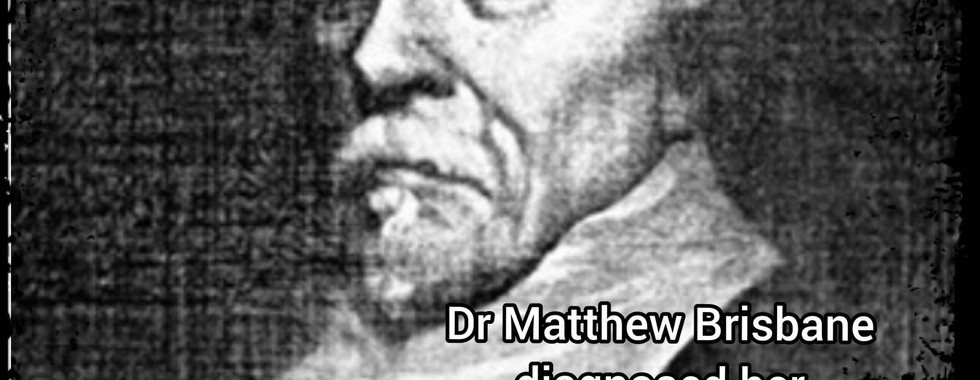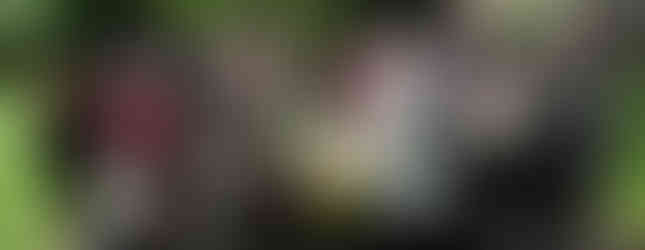The Witches of Renfrewshire: Scotland's Last Witch Trials
- Gavin Divers
- Oct 18, 2024
- 6 min read
The Historical Context of Witch Trials in Scotland
The late 17th century in Scotland was characterised by a mixture of religious, political, and social turmoil. The Reformation had taken hold in the country, establishing a strict Presbyterian faith that emphasised the fight against perceived evil, which included witchcraft. This religious climate, marked by a fear of Catholicism and a belief in predestination, contributed to a cultural backdrop where suspicion and accusations could easily flourish. The Protestant Church saw itself as a moral guardian, and the persecution of witches was often justified as necessary to preserve society’s purity and piety.
The Scottish witch hunts were particularly brutal compared to other European countries, with higher execution rates. The Scottish legal system allowed for the use of torture to extract confessions, which was not only legal but encouraged, resulting in many accused witches admitting to crimes under duress. The belief in the Devil's physical presence and ability to interact with humans was a driving force in the persecution, as witches were thought to have made pacts with Satan, thereby committing treason against God and the state.
The Influence of King James VI
King James VI, who ruled Scotland from 1567 and later became James I of England, played a significant role in fostering the witch hunts. His treatise Daemonologie, published in 1597, argued for the reality of witchcraft and the necessity of rooting out witches. The text legitimised the persecution and shaped public and legal attitudes towards suspected witches. His personal involvement in the North Berwick witch trials of 1590-91, where he interrogated accused witches himself, set a precedent for the acceptance of witch hunts as a justified endeavour. The influence of his ideas continued into the 17th century, creating an environment where witch trials were seen not just as judicial processes, but as religious and moral crusades.
Renfrewshire’s Socioeconomic Struggles
Renfrewshire, like much of Scotland, was struggling with economic hardships during the late 1600s. The region was primarily agricultural, with local economies relying heavily on farming and textile production. However, adverse weather conditions had led to poor harvests, increasing poverty, and social unrest. The economic strain placed on the community made people more likely to seek scapegoats for their misfortunes, and accusations of witchcraft often arose as a means of explaining crop failures, disease outbreaks, or sudden deaths.
Moreover, tensions between Highlanders and Lowlanders added to the atmosphere of suspicion. Katherine Campbell, a Highlander seeking work in a predominantly Lowland area, would have been viewed as an outsider, and her cultural and linguistic differences might have contributed to her being targeted. The distrust towards Highlanders, who were often associated with lawlessness and Catholicism, may have influenced the accusations against her.
The Case of Christian Shaw and the Rise of the Accusations
The witchcraft accusations in Renfrewshire began with an incident involving 11-year-old Christian Shaw, daughter of the Laird of Bargarran. In August 1696, Shaw accused a family servant, Katherine Campbell, of cursing her after being reprimanded. Soon after, Shaw began experiencing fits, contortions, and strange behaviour, which her family attributed to witchcraft. As her symptoms intensified, she accused other local individuals of participating in the supposed plot against her.
The involvement of children in the witch trials is a significant aspect. Shaw, along with other children like Elizabeth Anderson and the Lindsay boys, played crucial roles in accusing adults of witchcraft. The psychological factors behind the children's accusations may have included a desire for attention, a need to conform to adult expectations, or even manipulation by adults who believed in the witchcraft narrative. The cultural context, which placed high importance on children as innocent and trustworthy, meant that their testimonies were given significant weight.

Folk Beliefs, Superstitions, and the Role of Fairies
The people of Renfrewshire, like much of Scotland, held strong beliefs in the supernatural, including fairies, banshees, and other mystical creatures. These folk beliefs were often intertwined with the fear of witchcraft, as fairies and witches were sometimes thought to collaborate. The belief in charms and curses was also widespread, with the idea that an individual could be bewitched by an envious or angry person.
Christian Shaw's symptoms, such as convulsions and trances, were interpreted within this cultural framework. Illnesses that modern medicine would explain as epilepsy, Tourette’s syndrome, or other neurological conditions were attributed to witchcraft. The lack of scientific understanding about disease meant that supernatural explanations were not only plausible but were often the default response.
The Trials: Evidence, Procedures, and Torture
The Paisley Witch Trials were marked by the use of “spectral evidence,” where witnesses claimed to see the spirit or apparition of the accused committing acts of witchcraft. This type of evidence was notoriously unreliable, yet it played a significant role in many witch trials of the period, including Renfrewshire's.
Interrogation methods during the trials included sleep deprivation, starvation, and physical restraint, which were intended to break the accused and extract confessions. While torture devices such as thumbscrews and the "boot" (a form of leg-crushing device) were not used in these trials, the psychological pressure was significant. The pricking of the accused's skin, searching for the "Devil's mark," was another common practice. Prickers, often fraudulent, would use retractable needles to "prove" that certain spots on a person’s body did not bleed, supposedly indicating a pact with the Devil.

The Influence of Patrick Simson and the Religious Authorities
Patrick Simson, a respected minister in Renfrewshire, was a key figure in the witch trials. His previous involvement in witch hunts and his strong beliefs in the reality of witchcraft influenced the judicial process. Simson's sermons often reinforced the idea that the Devil was at work in the community, thus justifying the persecution of those accused. His authority lent credibility to the trials and made it difficult for accused individuals to receive fair treatment.
The Execution and the Aftermath
On 10th June 1697, seven people—Margaret Lang, John Lindsay, James Lindsay, Agnes Naismith, Katherine Campbell, Margaret Fulton, and John Reid—were executed on Gallow Green in Paisley. They were hanged and then burned, a practice intended to prevent their bodies from being used by the Devil. Agnes Naismith, the eldest of the group, is said to have cursed the town of Paisley, warning that her death would bring misfortune. This curse has become part of local folklore, with some attributing subsequent disasters in the area to her words.

The Decline of Witch Hunts in Scotland
The Paisley Witch Trials were among the last large-scale witch hunts in Scotland. By the early 18th century, attitudes towards witchcraft were beginning to change. The influence of the Enlightenment, with its emphasis on reason and science, gradually replaced superstitious beliefs. Legal standards for evidence were also evolving, making it more difficult to convict someone based on accusations alone. The 1736 Witchcraft Act, which repealed previous laws against witchcraft, effectively ended the practice of witch hunting in Britain.
Christian Shaw’s Later Life and Contributions
Despite the tragic events associated with her youth, Christian Shaw went on to become an influential figure in Scotland's industrial history. She founded the Bargarran Thread Company, which produced high-quality linen thread using techniques she had smuggled from Holland. Her enterprise grew, helping to establish Renfrewshire as a centre for textile production. This shift in local industry helped alleviate some of the economic hardships that had contributed to the earlier climate of fear and suspicion.

Commemoration and Modern Reflections
In 2008, a memorial was erected on the site of the execution, featuring a horseshoe sculpture embedded in the ground, symbolising a traditional charm against evil. The monument serves as a reminder of the dangers of mass hysteria and the tragic consequences of scapegoating. Modern historians view the Paisley Witch Trials as a case study in the social dynamics of fear, demonstrating how economic hardship, religious fervour, and psychological factors can converge to create a “witch hunt” mentality.
Comparisons to Other Witch Hunts
The Renfrewshire Witch Trials share similarities with other well-known cases, such as the Salem Witch Trials in 1692 and the Pendle Witch Trials in 1612. In all these instances, accusations were fuelled by local tensions, economic difficulties, and religious zeal. Spectral evidence played a central role, and the involvement of children as accusers was a common theme. These parallels help place the Paisley events within the broader context of European and North American witch hunts.

Clarifying Discrepancies in Historical Accounts
The exact details of the Renfrewshire Witch Trials, including the number of accused and the specifics of the accusations, vary in historical records. These discrepancies may be attributed to differing accounts from contemporaries, the loss or destruction of official records, and biases in the sources that have survived. The trials were documented by local ministers and laypeople who may have had vested interests in portraying events in a certain light, making it difficult to reconstruct an entirely accurate picture.
The Legacy of the Paisley Witches
The trials and their aftermath have left an indelible mark on Renfrewshire’s cultural memory. The tale of the Paisley witches serves as a powerful reminder of the consequences of superstition and injustice. The execution site remains a place of reflection, and local folklore continues to recount the supposed curse left by Agnes Naismith. These stories have become part of the cultural fabric, influencing how the community views its past.





































































Comentarios